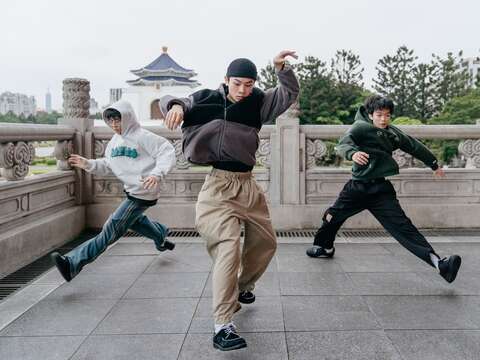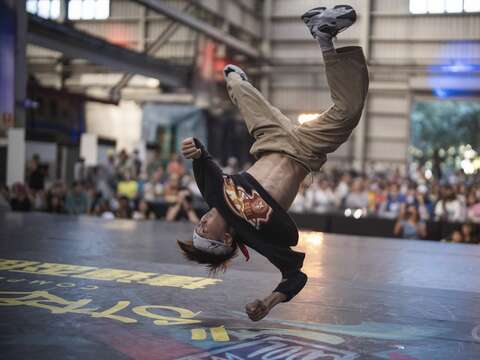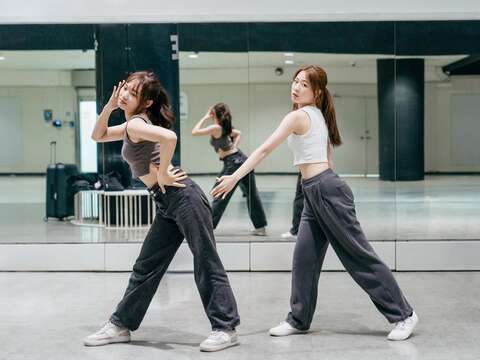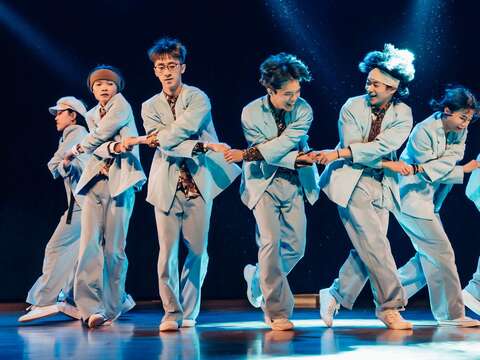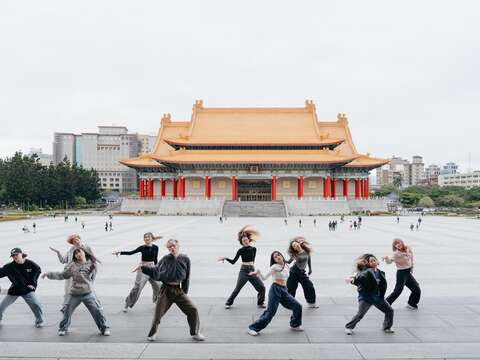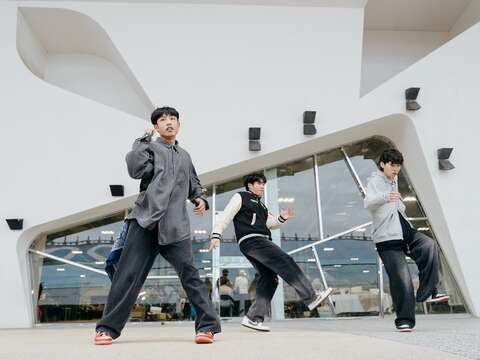Post date:2024-03-11
527
TAIPEI #35 (2024 Spring)
Flow in the City: Street Dance Evolution in Taipei
Author Ellie Chueh
Photographer Mike Wang, Brown Chen, Metro Taipei
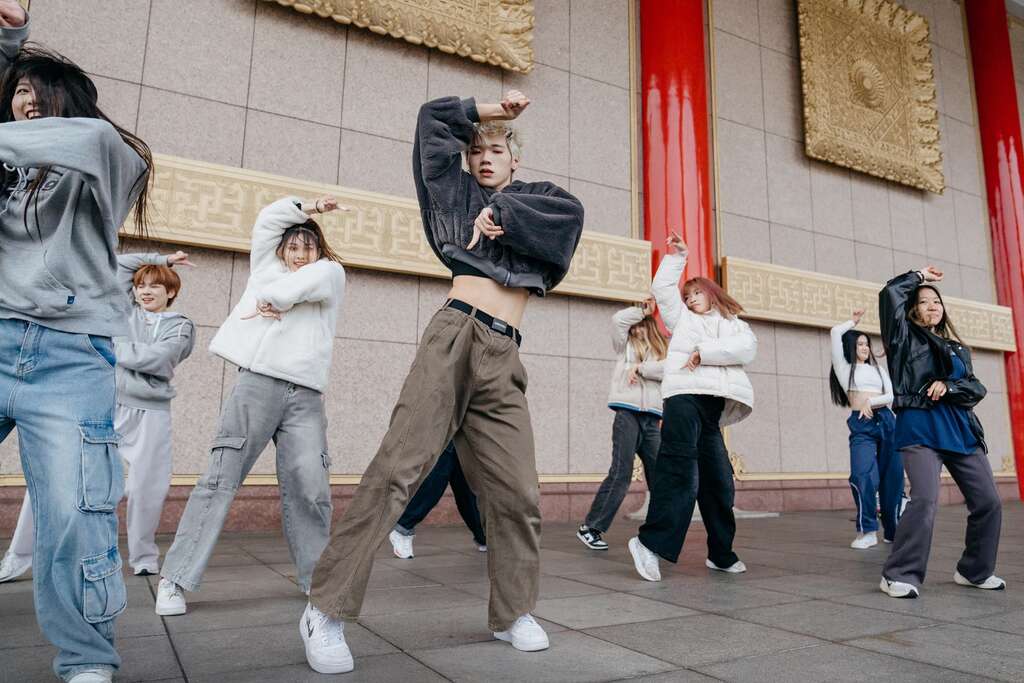 ▲Dancers across the city gather together to perfect their moves and formations. (Photo・Brown Chen)
▲Dancers across the city gather together to perfect their moves and formations. (Photo・Brown Chen)
Spring, with its renewing touch, fills the streets of Taipei with an abundant energy, an invitation for the city to awaken. In this season of revival, the human spirit resonates with this newfound liveliness, making it an amazing time for movement and self-expression. In this same spirit of rebirth and revitalization, street dance, which has its roots as an underground subculture, has gradually evolved into a powerful and widespread cultural phenomenon in Taipei.
Think of this as the start of a cool adventure. Spring represents a fresh start and new growth, and much the same, street dance in Taipei has grown from a small group of fans to something most everyone loves. The year 2018 was a big moment because "breaking," one of the main styles of street dance, became an official event of the Youth Olympics Games, and was subsequently included in the 2024 Summer Olympics. Now, with everyone gearing up for Paris, street dance is no longer just an art form, but also a legitimate sport.
In the vibrant streets of Taipei, blooming cherry blossoms mirror the emergence of street dance culture as passionate dancers turn the city into their own personal dance floor. Street dance is more than just moves; it's a language that Taipei speaks, a rhythm that echoes through its alleys and squares.
From the Street to the Stage
The evolution of street dance in Taipei is like the unfolding of an enchanting routine. What began as a whisper in the underground scene has grown into a resounding beat across the city. No longer restricted to hidden corners, street dance has spilled onto the streets, proudly capturing the attention and admiration of the city.
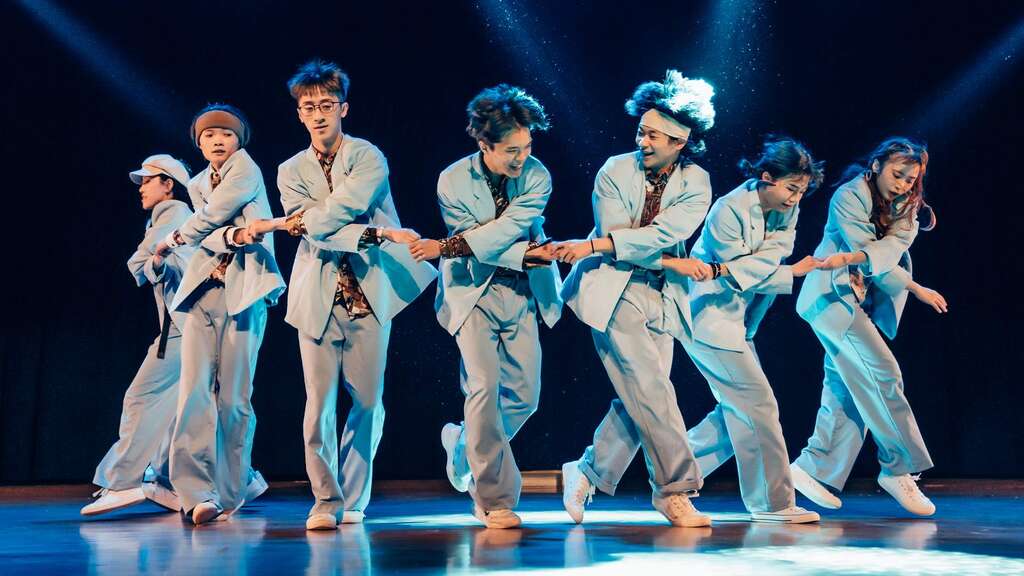 ▲There are more and more dance events in Taipei for dancers to "battle" and for others to simply enjoy the shows. (Photo・Mike Wang)
▲There are more and more dance events in Taipei for dancers to "battle" and for others to simply enjoy the shows. (Photo・Mike Wang)
As you immerse yourself in the beats, rhythms, and stories that have shaped street dance into an integral part of Taipei's cultural fabric, you'll witness not only the evolution of the dance but also the transformation of the city itself. The streets of Taipei have become a platform for artistic expression, a place where every move tells a story and every dancer contributes to the city's vitality. Now, let's delve into the roots of street dance, starting with its origins in New York City back in the 1970s.
As a mode of creative expression for African American, Hispanic, Latin American, Jamaican, and Caribbean youth, "street dance" began to take form on the streets, and it is all about a bold and fearless attitude towards life. Over time, it has developed two main types: "Old School" and "New School, " with many different styles telling unique stories.
A Diverse Tapestry
Old School street dance is energetic and rooted in basic moves. Dancers "battle" to show their skills with footwork and signature moves like a creative competition where everyone expresses themselves.
New School is more individual and modern. Dancers mix in moves from martial arts, contemporary dance, and other styles to create something unique. It's about expressing yourself freely.
Within Old School and New School, there are many styles adding a sense of diverse beauty to street dance. Breaking is one of the most famous, known for its acrobatic spins and cool freezes. Hip-hop is another, with rhythmic footwork and cool isolations. Popping and Locking have sharp and angular movements, adding a bit of complexity. Meanwhile, Jazz brings a sense of elegance to street dance.
Taipei Rides the Wave
As street dance evolves, it transcends geographical boundaries, becoming a global phenomenon. What started on the street corners of major American urban centers has now grown into an international language, spoken by dancers worldwide. The diverse subgenres contribute to a rich and interconnected global fabric, with each region adding its unique flavor to the dance form.
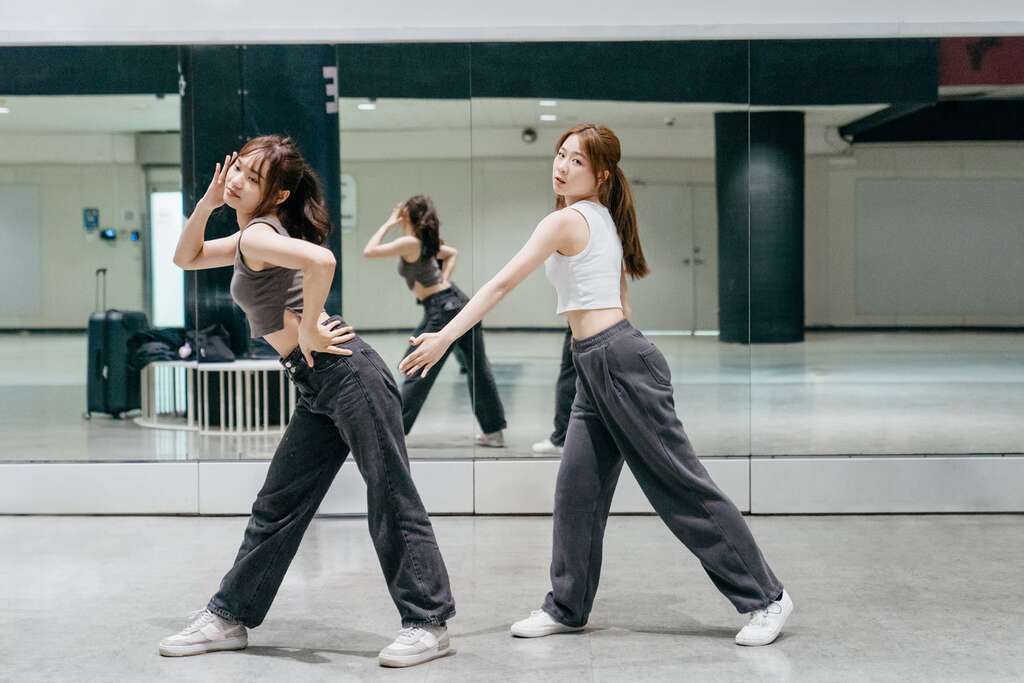 ▲Street dance is becoming increasingly popular in Taipei. More and more dancers participate in dance classes after work or school. (Photo・Brown Chen)
▲Street dance is becoming increasingly popular in Taipei. More and more dancers participate in dance classes after work or school. (Photo・Brown Chen)
In Taipei, this phenomenon has found a home. The street dance culture in Taiwan began to take root in the 1980s, likely influenced by the introduction of Hip-Hop culture during that time. Although once seen as a niche subculture, street dance gradually stepped into the mainstream in Taiwan, largely due to Taipei youth's willingness to explore this new form of art. Student clubs dedicated to street dance started to spring up across high schools, where seniors taught basic moves to juniors, providing opportunities for younger generations to enjoy dancing and develop a community of dance enthusiasts.
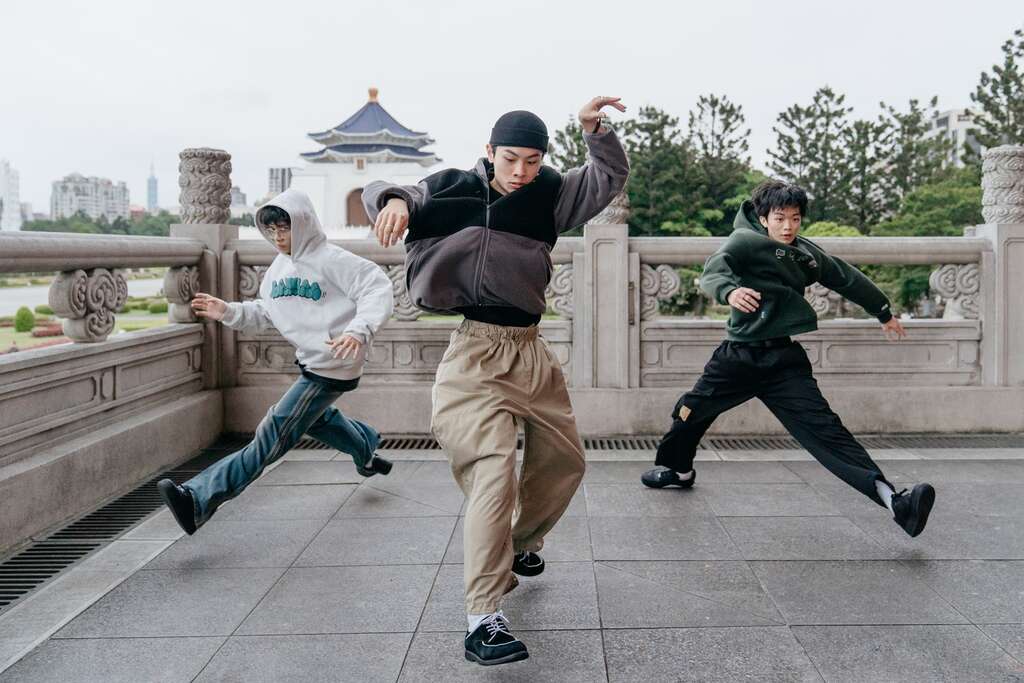 ▲▼Student dancers can be often seen at public venues like National Theater & Concert Hall with their unique choreography. (Photo・Brown Chen)
▲▼Student dancers can be often seen at public venues like National Theater & Concert Hall with their unique choreography. (Photo・Brown Chen)
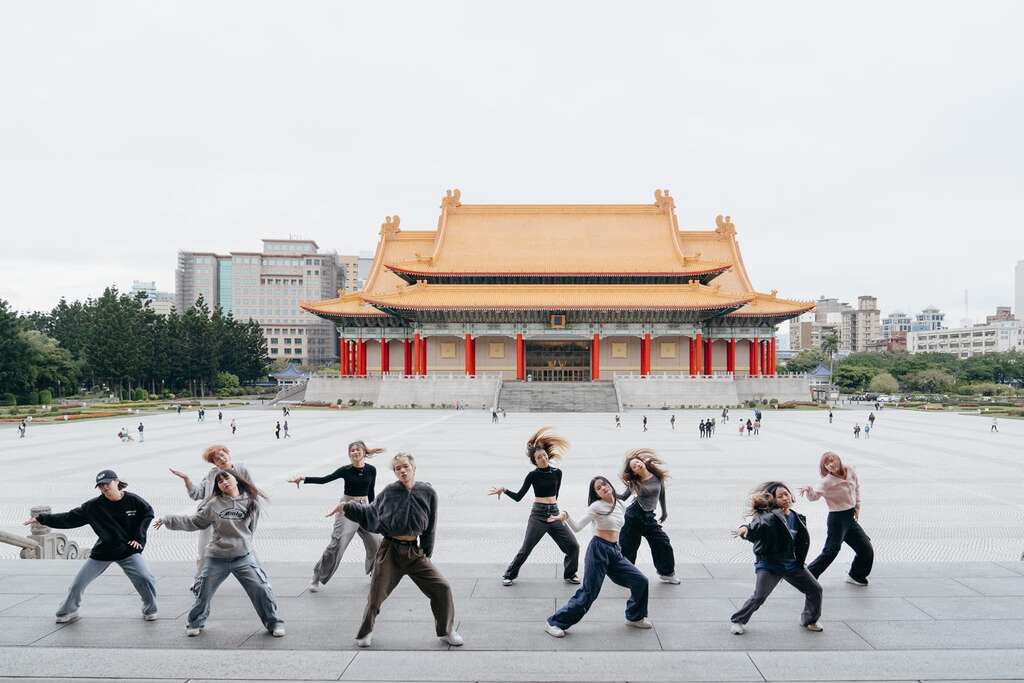
The turning point happened in 2007 when the Red Bull BC One competition came to Taipei. It was not just a contest; it brought B-Boys and B-Girls from around Taiwan together, blending the global spirit of street dance with Taipei's own vibe.
A more recent milestone was the creation of the Department of Sports Performing Arts (運動藝術學系) at the University of Taipei (台北市立大學). It was approved in 2007 and initially named as "Dynamic Performing Arts." To better align with its evolving focus, the department officially changed to its current name in 2013. This was a clear sign that Taipei wanted to support not only sports, but also the art of performance, with street dance becoming a key focus. The courses related to street dance in this department show that the city sees the cultural importance of street dance and its role in contributing Taipei's artistic scene. What was once a subcultural trend is now proudly promoted.
As Taipei embraced street dance, more groups and communities joined in local events and competitions. This change was embraced by young and old alike. With growing awareness of the physical benefits of street dance, such as enhancing strength and coordination, some parents even enroll their kids in talent classes to learn street dance. In these classes, kids learn not only dance moves but also important values like confidence, creativity, art appreciation, and teamwork. This shift has turned street dance into more than just a pastime, but an engaging art that everyone can enjoy. The streets of Taipei have become stages where both kids and adults show off their skills, adding to Taipei's lively city scape.
To put it simply, street dance in Taipei has come a long way. Today, it is not just about artistic expression; it's a living, breathing embodiment of the diverse cultural influences that shape Taipei's identity.
The City as Dance Studio
The OG spirit of street dance, which encourages dancers to practice and showcase their moves throughout the city, is still very evident in the vibrant city of Taipei. Iconic places like Taipei Expo Park (花博公園), National Theater & Concert Hall (國家兩廳院), and Taipei Performing Arts Center (台北表演藝術中心) have become favorite spots for street dancers with their large open spaces. Sun Yat-sen Memorial Hall (國父紀念館) is also worth mentioning, as it was already historically significant and has now welcomed the contemporary rhythm of street dance, creating a fusion of the elements from both the old/new and the East/West.
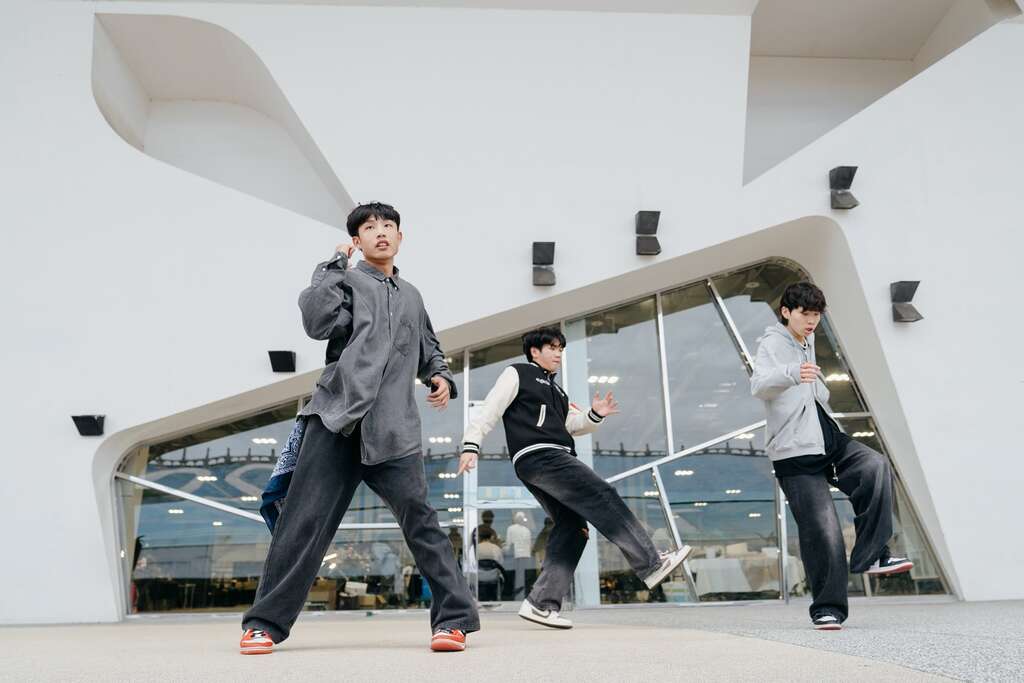 ▲Taipei Expo Park's expansive space provides ample room for dancers to perform their routines. (Photo・Brown Chen)
▲Taipei Expo Park's expansive space provides ample room for dancers to perform their routines. (Photo・Brown Chen)
These venues offer expansive spaces for street dancers to unleash their creativity while also serving as meeting grounds where they can connect, exchange ideas, and forge lasting friendships that further foster Taipei's street dance community.
Metro Stations — Cradle of Young Talents
In the middle of Taipei's busy transportation system, metro stations like Ximen and Shuanglian have evolved into dynamic hubs for street dance. These stations, strategically located and easily accessible, have become popular among students who find joy in practicing there. Furthermore, in certain stations such as Zhongshan and the aforementioned Shuanglian, open spaces with mirrored walls were designed for dance practice purposes. The beats of street dance mix with the sounds of the city, making these metro stations lively places where dancers of all levels come together.
The popularity of metro stations as street dance hubs gave rise to the now-iconic "Metro Street Dance Competition (捷運盃街舞大賽)." Organized by Metro Taipei since 2005, this annual event takes place from mid-August to September, and stands as a highlight for street dancers in Taipei, injecting a dose of coolness into Taipei's already diverse cultural landscape. The competition also shows how the excitement and interest in street dance have spread to every part of Taipei, like a happy and contagious energy.
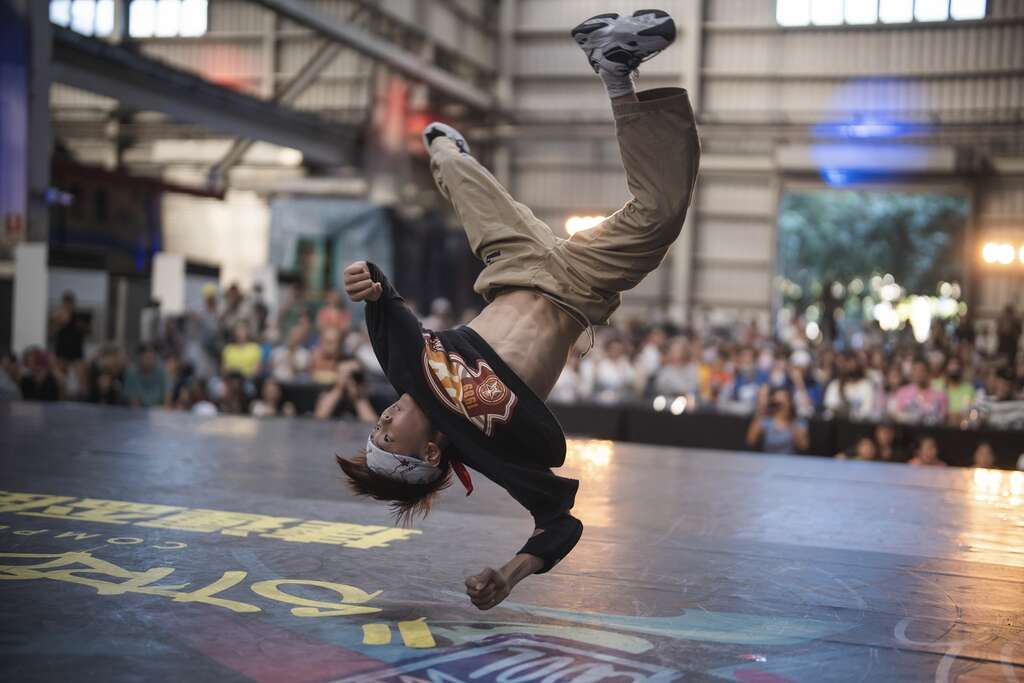 ▲A b-boy is showing off remarkable moves at the Metro Street Dance Competition. (Photo・Metro Taipei)
▲A b-boy is showing off remarkable moves at the Metro Street Dance Competition. (Photo・Metro Taipei)
In the heart of Taipei, where the city's vibrant energy intertwines with its rich cultural heritage, lively music emanates from around the city, setting a unique tone. The streets pulse with diversity and inclusivity, each dancer's step adding to the city's captivating rhythm. In this way, Taipei dances to its own beat in a harmonious celebration of the city's spirit.
Flow in the City: Street Dance Evolution in Taipei
Author Ellie Chueh
Photographer Mike Wang, Brown Chen, Metro Taipei
 ▲Dancers across the city gather together to perfect their moves and formations. (Photo・Brown Chen)
▲Dancers across the city gather together to perfect their moves and formations. (Photo・Brown Chen)Spring, with its renewing touch, fills the streets of Taipei with an abundant energy, an invitation for the city to awaken. In this season of revival, the human spirit resonates with this newfound liveliness, making it an amazing time for movement and self-expression. In this same spirit of rebirth and revitalization, street dance, which has its roots as an underground subculture, has gradually evolved into a powerful and widespread cultural phenomenon in Taipei.
Think of this as the start of a cool adventure. Spring represents a fresh start and new growth, and much the same, street dance in Taipei has grown from a small group of fans to something most everyone loves. The year 2018 was a big moment because "breaking," one of the main styles of street dance, became an official event of the Youth Olympics Games, and was subsequently included in the 2024 Summer Olympics. Now, with everyone gearing up for Paris, street dance is no longer just an art form, but also a legitimate sport.
In the vibrant streets of Taipei, blooming cherry blossoms mirror the emergence of street dance culture as passionate dancers turn the city into their own personal dance floor. Street dance is more than just moves; it's a language that Taipei speaks, a rhythm that echoes through its alleys and squares.
From the Street to the Stage
The evolution of street dance in Taipei is like the unfolding of an enchanting routine. What began as a whisper in the underground scene has grown into a resounding beat across the city. No longer restricted to hidden corners, street dance has spilled onto the streets, proudly capturing the attention and admiration of the city.
 ▲There are more and more dance events in Taipei for dancers to "battle" and for others to simply enjoy the shows. (Photo・Mike Wang)
▲There are more and more dance events in Taipei for dancers to "battle" and for others to simply enjoy the shows. (Photo・Mike Wang) As you immerse yourself in the beats, rhythms, and stories that have shaped street dance into an integral part of Taipei's cultural fabric, you'll witness not only the evolution of the dance but also the transformation of the city itself. The streets of Taipei have become a platform for artistic expression, a place where every move tells a story and every dancer contributes to the city's vitality. Now, let's delve into the roots of street dance, starting with its origins in New York City back in the 1970s.
As a mode of creative expression for African American, Hispanic, Latin American, Jamaican, and Caribbean youth, "street dance" began to take form on the streets, and it is all about a bold and fearless attitude towards life. Over time, it has developed two main types: "Old School" and "New School, " with many different styles telling unique stories.
A Diverse Tapestry
Old School street dance is energetic and rooted in basic moves. Dancers "battle" to show their skills with footwork and signature moves like a creative competition where everyone expresses themselves.
New School is more individual and modern. Dancers mix in moves from martial arts, contemporary dance, and other styles to create something unique. It's about expressing yourself freely.
Within Old School and New School, there are many styles adding a sense of diverse beauty to street dance. Breaking is one of the most famous, known for its acrobatic spins and cool freezes. Hip-hop is another, with rhythmic footwork and cool isolations. Popping and Locking have sharp and angular movements, adding a bit of complexity. Meanwhile, Jazz brings a sense of elegance to street dance.
Taipei Rides the Wave
As street dance evolves, it transcends geographical boundaries, becoming a global phenomenon. What started on the street corners of major American urban centers has now grown into an international language, spoken by dancers worldwide. The diverse subgenres contribute to a rich and interconnected global fabric, with each region adding its unique flavor to the dance form.
 ▲Street dance is becoming increasingly popular in Taipei. More and more dancers participate in dance classes after work or school. (Photo・Brown Chen)
▲Street dance is becoming increasingly popular in Taipei. More and more dancers participate in dance classes after work or school. (Photo・Brown Chen) In Taipei, this phenomenon has found a home. The street dance culture in Taiwan began to take root in the 1980s, likely influenced by the introduction of Hip-Hop culture during that time. Although once seen as a niche subculture, street dance gradually stepped into the mainstream in Taiwan, largely due to Taipei youth's willingness to explore this new form of art. Student clubs dedicated to street dance started to spring up across high schools, where seniors taught basic moves to juniors, providing opportunities for younger generations to enjoy dancing and develop a community of dance enthusiasts.
 ▲▼Student dancers can be often seen at public venues like National Theater & Concert Hall with their unique choreography. (Photo・Brown Chen)
▲▼Student dancers can be often seen at public venues like National Theater & Concert Hall with their unique choreography. (Photo・Brown Chen)
The turning point happened in 2007 when the Red Bull BC One competition came to Taipei. It was not just a contest; it brought B-Boys and B-Girls from around Taiwan together, blending the global spirit of street dance with Taipei's own vibe.
A more recent milestone was the creation of the Department of Sports Performing Arts (運動藝術學系) at the University of Taipei (台北市立大學). It was approved in 2007 and initially named as "Dynamic Performing Arts." To better align with its evolving focus, the department officially changed to its current name in 2013. This was a clear sign that Taipei wanted to support not only sports, but also the art of performance, with street dance becoming a key focus. The courses related to street dance in this department show that the city sees the cultural importance of street dance and its role in contributing Taipei's artistic scene. What was once a subcultural trend is now proudly promoted.
As Taipei embraced street dance, more groups and communities joined in local events and competitions. This change was embraced by young and old alike. With growing awareness of the physical benefits of street dance, such as enhancing strength and coordination, some parents even enroll their kids in talent classes to learn street dance. In these classes, kids learn not only dance moves but also important values like confidence, creativity, art appreciation, and teamwork. This shift has turned street dance into more than just a pastime, but an engaging art that everyone can enjoy. The streets of Taipei have become stages where both kids and adults show off their skills, adding to Taipei's lively city scape.
To put it simply, street dance in Taipei has come a long way. Today, it is not just about artistic expression; it's a living, breathing embodiment of the diverse cultural influences that shape Taipei's identity.
The City as Dance Studio
The OG spirit of street dance, which encourages dancers to practice and showcase their moves throughout the city, is still very evident in the vibrant city of Taipei. Iconic places like Taipei Expo Park (花博公園), National Theater & Concert Hall (國家兩廳院), and Taipei Performing Arts Center (台北表演藝術中心) have become favorite spots for street dancers with their large open spaces. Sun Yat-sen Memorial Hall (國父紀念館) is also worth mentioning, as it was already historically significant and has now welcomed the contemporary rhythm of street dance, creating a fusion of the elements from both the old/new and the East/West.
 ▲Taipei Expo Park's expansive space provides ample room for dancers to perform their routines. (Photo・Brown Chen)
▲Taipei Expo Park's expansive space provides ample room for dancers to perform their routines. (Photo・Brown Chen)These venues offer expansive spaces for street dancers to unleash their creativity while also serving as meeting grounds where they can connect, exchange ideas, and forge lasting friendships that further foster Taipei's street dance community.
Metro Stations — Cradle of Young Talents
In the middle of Taipei's busy transportation system, metro stations like Ximen and Shuanglian have evolved into dynamic hubs for street dance. These stations, strategically located and easily accessible, have become popular among students who find joy in practicing there. Furthermore, in certain stations such as Zhongshan and the aforementioned Shuanglian, open spaces with mirrored walls were designed for dance practice purposes. The beats of street dance mix with the sounds of the city, making these metro stations lively places where dancers of all levels come together.
The popularity of metro stations as street dance hubs gave rise to the now-iconic "Metro Street Dance Competition (捷運盃街舞大賽)." Organized by Metro Taipei since 2005, this annual event takes place from mid-August to September, and stands as a highlight for street dancers in Taipei, injecting a dose of coolness into Taipei's already diverse cultural landscape. The competition also shows how the excitement and interest in street dance have spread to every part of Taipei, like a happy and contagious energy.
 ▲A b-boy is showing off remarkable moves at the Metro Street Dance Competition. (Photo・Metro Taipei)
▲A b-boy is showing off remarkable moves at the Metro Street Dance Competition. (Photo・Metro Taipei)In the heart of Taipei, where the city's vibrant energy intertwines with its rich cultural heritage, lively music emanates from around the city, setting a unique tone. The streets pulse with diversity and inclusivity, each dancer's step adding to the city's captivating rhythm. In this way, Taipei dances to its own beat in a harmonious celebration of the city's spirit.
Gallery
:::
Popular articles
 Spring Days & Green Healing on Yangmingshan (TAIPEI Quarterly 2024 Spring Vol.35)
Spring Days & Green Healing on Yangmingshan (TAIPEI Quarterly 2024 Spring Vol.35) Exploring Urban Picnic Paradises: Health-Nourishing Fun in the Sun (TAIPEI Quarterly 2024 Spring Vol.35)
Exploring Urban Picnic Paradises: Health-Nourishing Fun in the Sun (TAIPEI Quarterly 2024 Spring Vol.35) Meet You in Zhongshan: The Ins and Outs of Taipei's Coolest Neighborhood (TAIPEI Quarterly 2024 Spring Vol.35)
Meet You in Zhongshan: The Ins and Outs of Taipei's Coolest Neighborhood (TAIPEI Quarterly 2024 Spring Vol.35) Flow in the City: Street Dance Evolution in Taipei (TAIPEI Quarterly 2024 Spring Vol.35)
Flow in the City: Street Dance Evolution in Taipei (TAIPEI Quarterly 2024 Spring Vol.35) An Ancient Blessing Culture: The Story of Paper Art (TAIPEI Quarterly 2024 Spring Vol.35)
An Ancient Blessing Culture: The Story of Paper Art (TAIPEI Quarterly 2024 Spring Vol.35) Sports City — Taipei's New Future (TAIPEI Quarterly 2024 Spring Vol.35)
Sports City — Taipei's New Future (TAIPEI Quarterly 2024 Spring Vol.35)
 Flow in the City: Street Dance Evolution in Taipei (TAIPEI Quarterly 2024 Spring Vol.35)
Flow in the City: Street Dance Evolution in Taipei (TAIPEI Quarterly 2024 Spring Vol.35)
